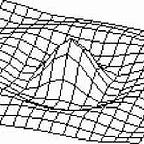ZX Spectrum
My dream machine
The ZX Spectrum is an 8-bit personal home computer released in the UK in 1982 by Sinclair Research Ltd.
For me the ZX Spectrum is a cultural memory I share with many others of the same age as myself, as this machine was a runaway success in Europe.
British technology entrepreneur Clive Sinclair launched the Spectrum in 1982. The Spectrum was an upgrade to Sinclair’s ZX81 which boasted more memory, a faster processor and colour graphics.
Upon its introduction, the Spectrum faced a wide range of competing home computers. The greatest competitors were the Commodore 64, Oric-1 and Atmos, BBC Microcomputer and later the Amstrad CPC.
And then, as now (with tablets or mobile phones, certainly) it was most definitely NOT about the hardware specs. It was ALL about what the machine can actually do, what its prime purpose of existence is.
With a lower price and more flexible hardware, it quickly outsold many of its competitors. It cost €110 compared to the C64 retailing at €399. It was a massive success, and between the original models and the subsequent Spectrum+ and Spectrum 128 editions, five million models were sold before it was discontinued in 1992.
The Spectrum was among the first mainstream audience home computers in the UK and several other countries in Europe. Since it was cheap and simple to learn to use and program, the Spectrum was the starting point for many programmers. The hardware limitations of the Spectrum imposed a special level of creativity on game designers, and so many Spectrum games are very creative and playable even by today’s standards.
Over 24,000 different software titles were created for the Spectrum, ranging from programming tools, spreadsheets and word processors to drawing, painting and 3D modelling packages as well as the games.
In Portugal seminar to the success of the ZX Spectrum range of computers was Zig Zag, a Weekly program broadcast by RTP, presented by Luiz Pereira de Sousa in the first half of the 80's, which contained a section dedicated to the ZX Spectrum games. During the show there were a contest with people playing Spectrum games: Match Point, Glu-Glu, Scuba Dive, Chuckie Egg, Phoenix and 3D Deathchase.
I bugged my parents constantly for one and on my 14th birthday I finally received mine. I was one of many who enjoyed those wonderful 8 bits machines, who accompanied all my youth. Many games, have passed through my hands and thanks to the speccy I have also made quite a few friends. Those afternoons in front of the TV with my classmates where we played games, will always stay in my memory.
Nostalgic Spectrum fans can turn back the clock and play hundreds of their favourite games using one of the many emulators available. Games can be played on a browser or on smartphones or tablets. It’s not the same as typing Load “” and wait like five minutes with a horrible noise pumping out of the TV, but it’s fun nonetheless.
The ZX Spectrum enjoyed a very strong community early on. Several dedicated magazines were released including Sinclair User (1982), Your Sinclair (1983) and CRASH (1984). Early on they were very technically oriented with type-in programs and machine code tutorials. Later on they became almost completely game-oriented.
I've barely scratched the surface here, on my next post I will talk about my favourite ZX Spectrum games, the ones that I feel were breathtaking in terms of their ambition, stories, virtual worlds, technology and cultural impact.
The attack of the Clones
Sinclair licensed the Spectrum design to Timex Corporation in the United States. An enhanced version of the Spectrum with better sound, graphics and other modifications was marketed in the USA by Timex as the Timex Sinclair 2068. Timex of Portugal created and sold the Timex Computer (TC) computers series: TC2048, TC2068.
TC2048 is a creation of Timex of Portugal, being almost 100% compatible with ZX Spectrum, it have extra video modes, a kempson joystick port and video composite jack. TC2068 is the European version of the american TS2068, it is more compatible with ZX Spectrum and have a ZX Spectrum edge connector.
Many unofficial Spectrum clones were produced, mainly in the former Eastern Bloc countries e.g. in Romania( ELECTROMAGNETICA Jet, ICE FELIX HC-85 ), Poland( ELWRO 800 Junior, Unipolbrit 2086).
In the Soviet Union, ZX Spectrum clones were assembled by thousands of small start-ups and distributed though small ads and street shops.
They were also very popular in South America (e.g. Microdigital TK 90X and TK 95, CZ Spectrum) and India (db Spectrum+).
